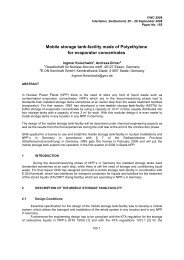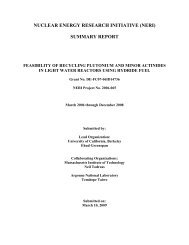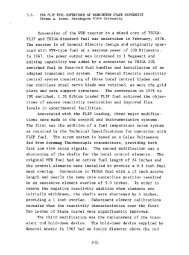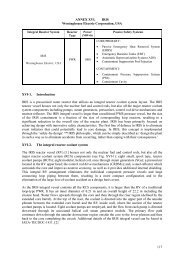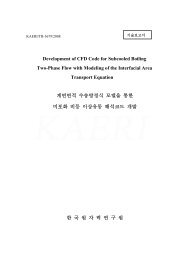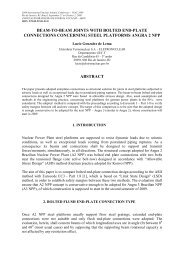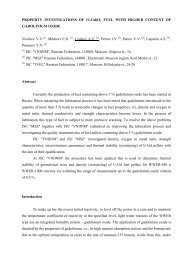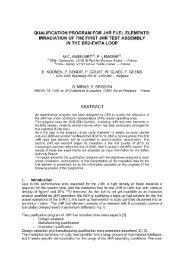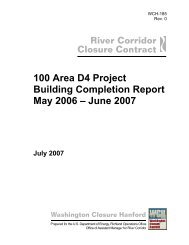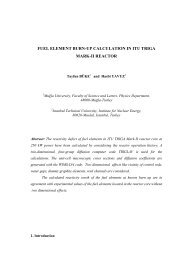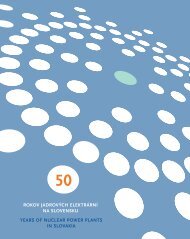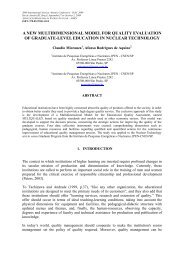transient calculations of coolant mixing in vver-440/213 rpv
transient calculations of coolant mixing in vver-440/213 rpv
transient calculations of coolant mixing in vver-440/213 rpv
Create successful ePaper yourself
Turn your PDF publications into a flip-book with our unique Google optimized e-Paper software.
The results show that the temperature gradient is steep <strong>in</strong> the vic<strong>in</strong>ity <strong>of</strong> the <strong>in</strong>let nozzle at the<br />
beg<strong>in</strong>n<strong>in</strong>g <strong>of</strong> the <strong>transient</strong>. It is an important result from the po<strong>in</strong>t <strong>of</strong> view <strong>of</strong> thermal stresses.<br />
The temperature distribution becomes homogenous at the end <strong>of</strong> the <strong>transient</strong> (Fig 3).<br />
Fig. 3: Temperature distribution on the wall <strong>of</strong> RPV<br />
ECS INJECTION INTO 2 nd , 3 rd AND 5 th COLD LOOPS<br />
Cold water was <strong>in</strong>jected <strong>in</strong>to the 2 nd , 3 rd and 5 th loops from the Emergency Cool<strong>in</strong>g System (ECS)<br />
dur<strong>in</strong>g the next <strong>transient</strong>. The <strong>in</strong>jection pipes are connected perpendicular to the cold leg loops<br />
from above. The boundary conditions <strong>of</strong> the simulation were calculated by APROS.<br />
The <strong>in</strong>jection starts <strong>in</strong> 10 th seconds. The mass flow <strong>of</strong> the <strong>in</strong>jected <strong>coolant</strong> (max. 13,5 kg/s) is<br />
significantly less compared to the mass flow <strong>of</strong> the loops (m<strong>in</strong>. 1510 kg/s). The temperature <strong>of</strong><br />
the ECCS <strong>coolant</strong> is 32 o C (Fig 4).



